People
Artist Guido van der Werve Pushes His Body to the Limit. Then a Life-Changing Accident Almost Ended It All
No task seems too difficult for triathlete, composer, and visual artist.
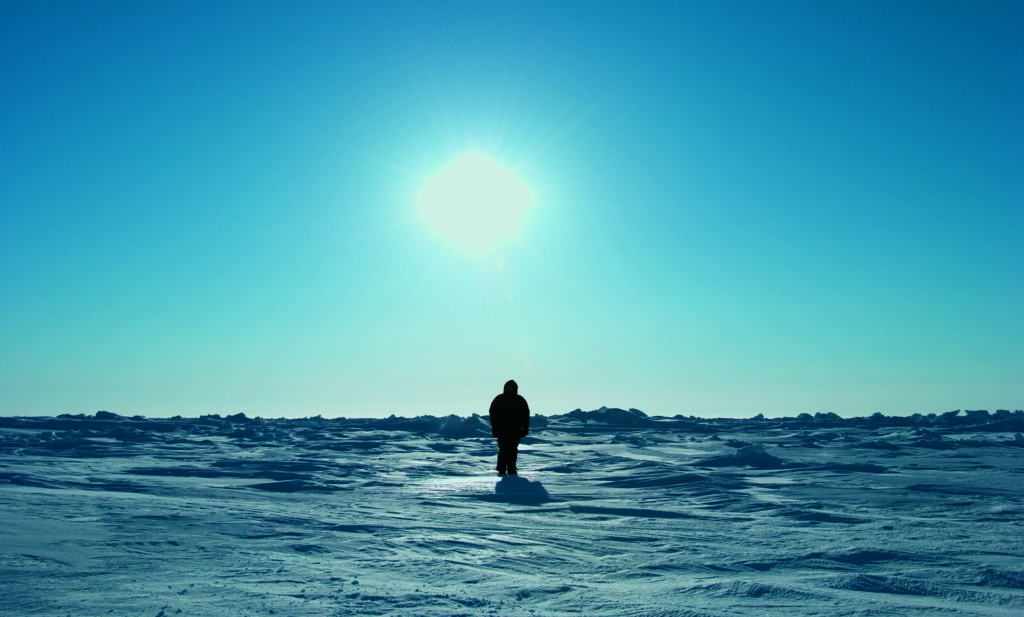
No task seems too difficult for triathlete, composer, and visual artist.

Kate Brown

Guido van der Werve is lying under what looks like an old chess board built into a table. Sliding out from under it like a car mechanic, the artist clarifies that it’s a “chess-piano,” an invention of his.
The concept for this device sounds simple enough. As a player moves his or her chess pieces, a mechanism below plays each move as a sound, creating a musical composition according to the game sequence. On the underside of the table, there is an impossibly complicated network of handcrafted wooden sticks, springs, glue, and metal brackets.
“It’s a little bit tricky to play because you have to read sheet music and chess moves at the same time,” says the Dutch artist, who writes the chess moves for himself and his opponent that create the musical piece. And there’s another thing that makes it tricky: it constantly needs painstaking re-tuning. The beautiful and fragile instrument does not travel well, though he has played chess-scores with it all over the world.
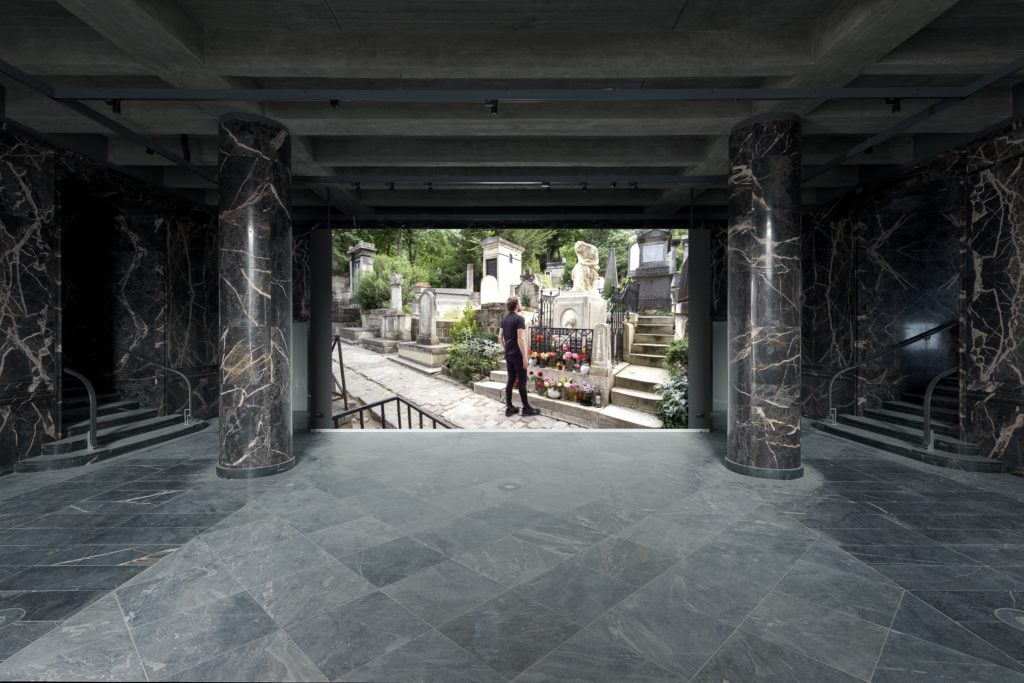
Guido van der Werve’s installation at Fluentum. Photo: Moritz Hirsch. Courtesy of Fluentum, Berlin.
But for the artist, the fact that a task is difficult is never reason not to do it. Beyond being an accomplished musician and visual artist, he is also a triathlete and marathon runner. He has combined those skills to create epic performances that are recorded in painstakingly made films. Often, he is the only subject, and the scenes can be drawn-out affairs that require immense pre–planning because they are dangerous or require incredible endurance. For Nummer veertien, home (2012), he was filmed on a 1,000-mile triathlon from the Warsaw church where Chopin’s heart is interred to the composer’s grave in Paris.
Several of his films are on view in an exhibition titled “Number eight, nine, twelve, thirteen, fourteen, seventeen,” the inaugural show of the new Fluentum Collection and the artist’s first major presentation in Berlin, where he currently lives. (The show opened today, April 25, and is named after works by the artist, which he numbers sequentially.) The collection’s building, a former Cold War military base that has been converted into a private museum by software CEO Markus Hannebauer, is an appropriate setting for van der Werve’s films, with its black marble pillars and walls reverberating van der Werve’s almost ecclesiastical compositions.
On Sunday, to coincide with Berlin Gallery Weekend, van der Werve will perform his mechanical instrument before an invited audience, where his “opponent,” fellow artist and composer Ari Benjamin Meyers, will play out the artist’s pre-written moves.
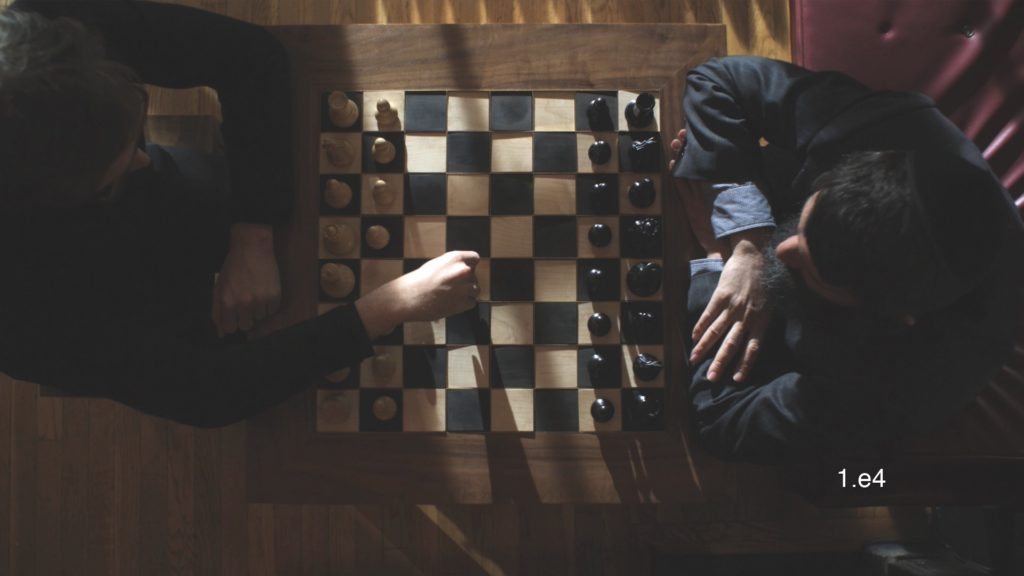
Guido van der Werve, Nummer twaalf (the chess piano) (2009). Photo Ben Geraerts. Courtesy Studio Guido van der Werve.
Despite the complicated preparations behind his works, what van der Werve delivers is simple and picturesque imagery. Each self-contained work maintains a calm, in part because of the musical scores he composes himself. Synthesizing performance art, music, sports, and the natural world in his films, van der Werve undertakes the most ancient search: the hunt for the sublime.
In one of his best-known works, Nummer acht (everything is going to be alright) (2007), the artist walks slowly across a icy wasteland followed by a huge icebreaker ship—the boat trails just 49 feet behind him, breaking up the ice. The sheer size of the ship in relation to van der Werve’s tall and athletic frame renders the artist disarmingly diminutive. Together, the two disproportionate figures cross the Baltic sea in a strange and slow procession, which the viewer watches in real time.
He says it was not as dangerous as it looks; he had a headset on and was communicating with the ship’s captain. “He said he wanted to be able to see the back of my head,” van der Werve says. “I plan these things really well, so I don’t think I have a death wish when I do these things.”
But death has come close. In 2016, van der Werve suffered a life-threatening injury in a bike accident in Berlin, and rehabilitation is an ongoing struggle. He is reluctant to dwell on the details, and says he wishes the media would just focus on his art.
“It’s my personal drama, so I don’t want it to be in the news. I am still working on fitting it into my life and it’s a challenge—but I am 42 and so it fits with my midlife crisis,” he says with a wry smile.
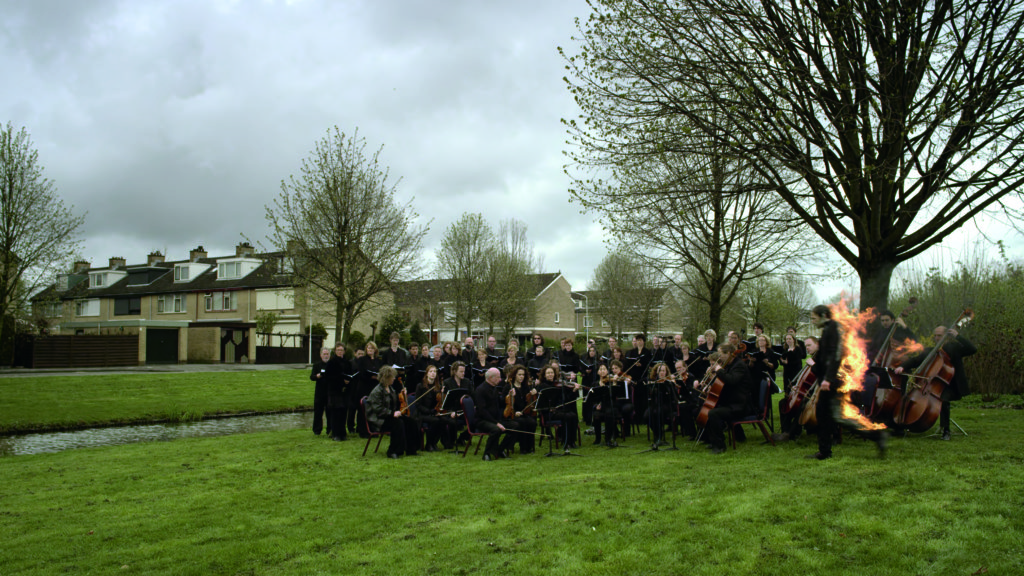
Guido van der Werve, Nummer veertien, home (2012). © Guido van der Werve, Courtesy of Fluentum, Berlin.
Yet he isn’t completely unwilling to share the experience, and the traumatic event will now inform a major new work: his first feature-length film. Fluentum is helping support the ambitious project, which will include what van der Werve calls a “sketch diary” of the aftermath of his accident. He says he has been bringing his cinematographer with him to his frequent visits to doctors and hospitals—a grueling medical regime he calls his “other job.”
The artist has a knack for finding beauty in the oddest of situations. In Number seventeen, killing time attempt one: from the deepest ocean to the highest mountain, he “climbs” the equivalent steps that it would take to get to the bottom of Mariana’s Trench; after, he jumps steps on a bed that reach in his bathtub to reach Mount Everest. Surely, knowing the artist’s capacity to blend banality and extremity, the documentation for his upcoming film will find a surprising way to speak about an otherwise very difficult situation of constant check-ups.
“My art and life have always been very mixed up,” he says. “This ‘new job’ of mine becomes kind of like performance.”
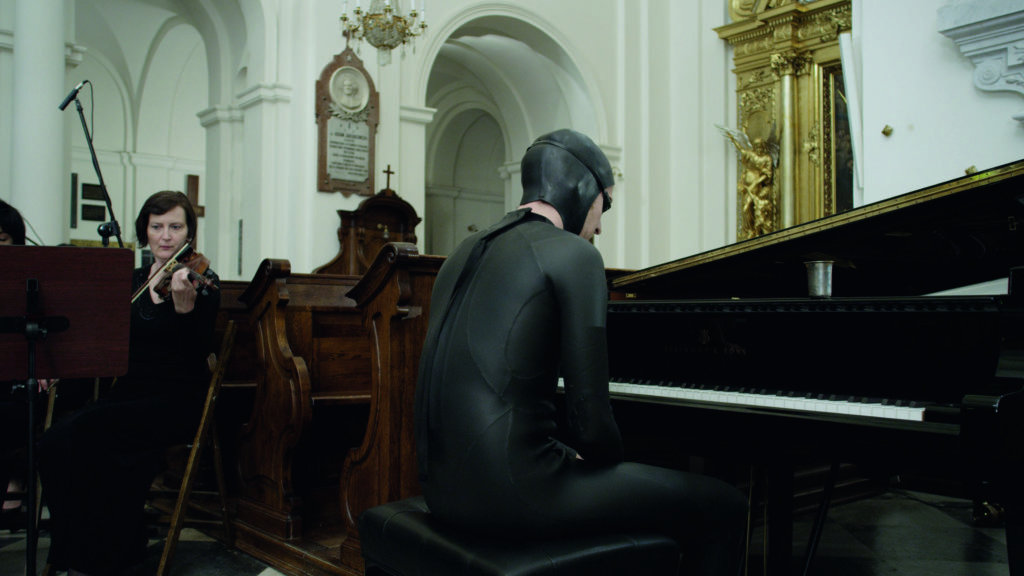
Guido van der Werve, Nummer veertien (home) (2012). Copyright Guido van der Werve, Courtesy of Fluentum, Berlin.
In an age of augmented and virtual reality, van der Werve’s films stand out because of their realistic simplicity. That’s one of the reasons he continues to be so enchanted with featuring his own tests of physical endurance in a genuine way, without actors or tricks.
“I am not so interested in acting as I am in performing—I’m looking for authenticity,” he says. And in his films, we see the artist just walking, running, swimming, cycling. Each film is intensely melancholic but also sweet, absurd, and utterly earnest. In Nummer negen (the day I didn’t turn with the world) (2007), the artist spent a full day on the North Pole turning against the earth’s rotation at exactly its pace, just to see if it was technically possible to not move. What was the experience like? “Well, you stand still on the North Pole for 24 hours… It’s relatively boring. But it became a beautiful work.”
Now he’s on to his next project. “I have never been a very patient man and I am not getting any younger,” he says. “As a performer, you are only as good as your last performance.”
Guido van der Werve’s “Number eight, nine, twelve, thirteen, fourteen, seventeen” will be on view from April 25 through June 22, 2019. Fluentum is open from April 25 to April 28, 2019, 11 a.m.–6 p.m., and afterwards by appointment. It is located at Clayallee 174, 14195 in Berlin.